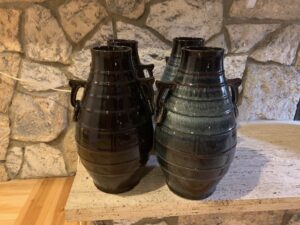 Somebody in Honolulu called me. He lost four pieces of Asian art in a move, the fault of the moving company. Sadly, four rare Chinese porcelain vessels. He asked for my help with a value and sent me photos. A word: for moving claims, find an appraiser CLOSE so they can sign that they saw it in person.
Somebody in Honolulu called me. He lost four pieces of Asian art in a move, the fault of the moving company. Sadly, four rare Chinese porcelain vessels. He asked for my help with a value and sent me photos. A word: for moving claims, find an appraiser CLOSE so they can sign that they saw it in person.
I found the client a colleague in Honolulu. I also explained something interesting and challenging about Asian ceramics to this lovely gentleman. An article I once wrote about Asian art went viral, although I’m NOT an expert in Asian art. Call or email me and I’ll inform you of the real experts, one of which lives in Santa Barbara, Keith Moore.
The problem, and also the glory, with Asian porcelain is that certain FORMS of ceramic have existed since the SONG or SUNG dynasty (906-1290) AND well before, into the Han dynasty (206-220). Such is he case with the Honolulu client who had four vases inherited from Great grandparents who came to Hawaii with the pieces from China in 1911.
HOW OLD? Does the age influence VALUE?
The fine shade of difference in Asian art, in relationship to Western art, is that Asian art has CLASSIC shapes and forms that have NOT changed in 2000 years. In fact TRUTH to the forms is the guide for VALUE. In Western art it’s often change and innovation that determines value. Art History professors call this the (Eurocentric) GENIUS factor in Western (European) art. That is the great artists (white male European geniuses of art history) changed shapes, forms, and styles because of their great geniuses, and made each era different. That’s not the same with Asian art of antiquity.
Thus, the opposite is true in Asian art from Western art. To stay CLOSE to your teacher‘s style is your mark of genius, albeit that your teacher lived 2,000 years ago. So that adherence to the truth of style, once perfected, is a mark of an artist’s genius throughout time in Japanese, Chinese, and Korean art of antiquity.
The client in Hawaii had four vases in the Archaic Chinese style, possibly 12 or 13th century or the work of a modern artist who followed the teaching of the Song dynasty, maybe 20th century.
The glaze doesn’t help us much to date the pieces. Old glaze from the ancient ceramics of China are also CLASSIC, and haven’t changed much in 2,000 years. Likewise the applied stylized handles have not changed, and the banded decoration, a doubly interesting feature, has not changed much. They incorporated banded decoration, also glazing, for two reasons. Glazing keeps the water OUT of a vessel. Banding strengthens. Strengthening a vessel with OUTSIDE banding of thicker clay made the vessel stronger! And it’s still used and LOVED today.
So what’s the age of such pieces?
The STYLISTIC AGE IS SONG in the 13th century, but the date of creation is 20th century or perhaps late 19th century. Values are, of course, different. SONG? The value is $10,000 or more each. Depending on an expert opinion. I use I M Chait Auctions in Beverly Hills for ANYTHING Asian, or Keith Moore here in Santa Barbara. A 19th or 20th century version of a SONG dynasty set of vessels is different in terms of value.
If 20th century the value becomes $2,000 or more each. In this case “reproduction” is the wrong WORD, because these were not reproduction pieces, but in the homage style, memorials of SONG dynasty pieces.
Dear reader, use experts, not me, when dealing with Asian fabrics or ceramics. The aesthetics are different from how we, who trained in Art History in the 1990s, think about artistic innovation, so called “progress.” and therefore VALUE, as “evolving.”
Try I M Chait auctioneers in Beverly Hills for the very top expert opinions. They can write appraisals and give auction estimates as well. Or contact me for Keith Moore’s email and he’ll help with ANYTHING Asian.